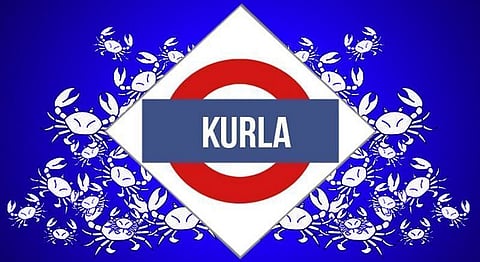
- HOMEGROWN WORLD
- #HGCREATORS
- #HGEXPLORE
- #HGVOICES
- #HGSHOP
- CAREERS
- ABOUT US
- CONTACT US

“It’s not so much what you learn about Mumbai, it’s what you learn about yourself.” - Danny Boyle.
If you’ve ever travelled by a train in Mumbai, you’ve probably felt a robotic monotone infiltrate your consciousness repeatedly - so much so that you’re accustomed to it seep into the background hustle, while you make your way from one station to the other.
“Next station, Bandra. Agla station, Bandra. Pudhil station, Bandre.”
You probably just read it in the same automated voice too.
As we’re all busy scurrying away into our respective compartments, trying very hard not to get killed, each unique station name becomes nothing but a final destination-a pit stop. The names however, have more to them then their overplayed appellations. We bring you a list of the stations and a little story of how they got their names.
I. CHURCHGATE STATION
One of the busiest stations, ‘Churchgate’ was named after the old Church Gate demolished in the mid-1860’s. The gate was one of the three main gates to the Fort that allowed entry to St. Thomas’ Church. It was only logical to adopt the name of this antique urban object since it was built in close proximity to the position of the demolished outer gate. The ancient gate stood as an entrance to the church on the spot that Flora Fountain stands today. It formed the boundary of south Mumbai in the 16th centuries.
The first train at Churchgate station is timed at 4 am, and the last one leaves the station at 1 am.
II. CHARNI ROAD
The first theory proposes a literal translation of ‘Charni’ which means grazing. In the past, several grazing lands for horses and cattle were located near the station, which was aptly inculcated into the name.
According to another theory, the name “Charni” or “Chendni” was brought to this area from Thane. A locality near Thane Railway station is called “Chendni” and many of its inhabitants settled in Girgaum and so renamed the settlement after their old home.
III. MATUNGA
The word ‘Matunga’ originates from the Marathi word, matang or elephant, owing to the belief that tuskers from Raja Bhimdev’s army were stationed in the area around the 12th century. During the British Raj, Matunga served as an artillery station but was abandoned by 1835 except for a couple of small hamlets housing the descendants of former menials at the military camp.
IV. GOREGAON
While few believe that this station and suburb is named after the politically active Gore (spelled Go-ray) family, who lived on the Western side of the suburb, others are of the opinion that the area got its name gore-gaon - the ‘white village’ since it was a large milk-producing centre since earlier times. Going by the former belief, the name literally means ‘Gore’s village’ in Marathi. Goregaon got its Railway Station as early as 1862.
V. NALASOPARA
Named after the site of the ancient port of ‘Shurparaka’ or ‘Sopara’- one of the oldest port towns in India dating back to more than 1000 years, it is believed to be Solomon’s Ophir by some scholars, and also said to be Shurparaka, the place where the Pandavas rested during their exile mentioned in the epic Mahabharata.
VI. KANDIVALI
The Kandivali, or Khandolee station as it was once called, was opened in 1907. The name is possibly derived from ‘Khand’, a sharp projection of rock, inspired by the stone quarries situated here.
VII. KURLA
One of the busiest stations on the central line, ‘Kurla’ originated from ‘Kurli’, the local name for crab, (as these were found in plenty in marshes in the vicinity) before it became a sub-urban locality.
Artwork: Mudit Ganguly
If you enjoyed this article we suggest you read:
